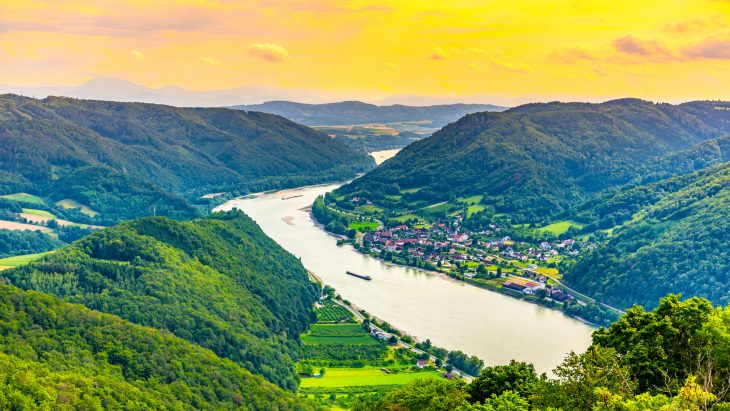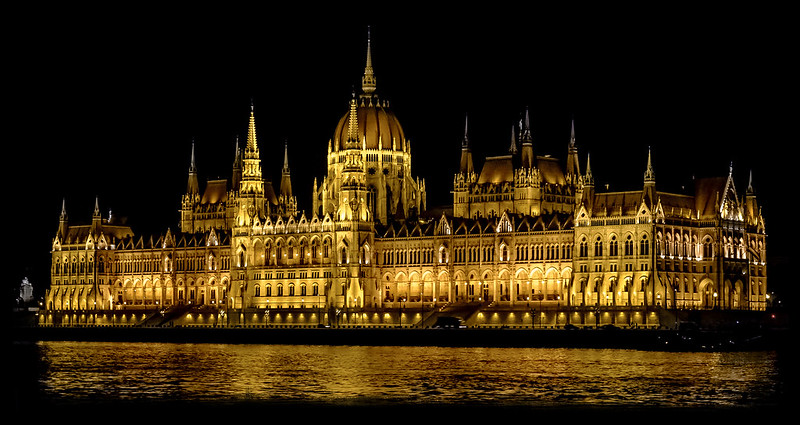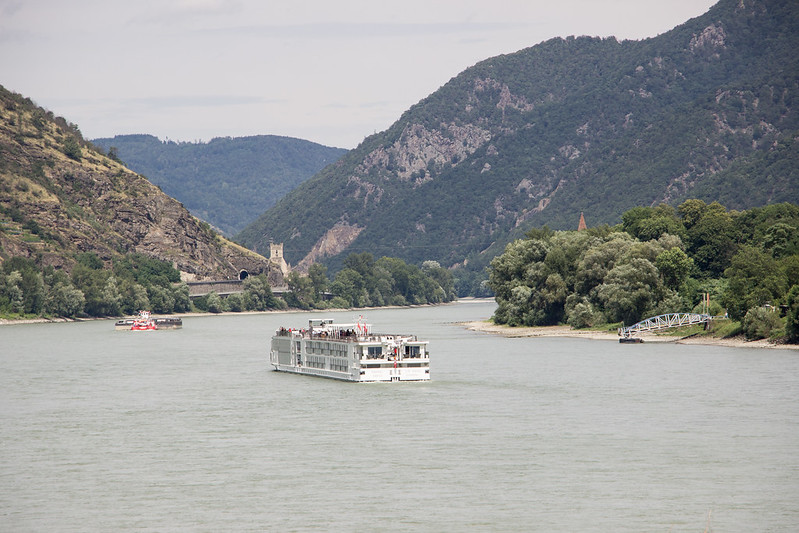
The Danube River, one of Europe’s most iconic waterways, weaves its way through multiple countries, captivating travelers with its beauty, history, and cultural significance. Stretching from the Black Forest in Germany to the Black Sea, the Danube River has witnessed the rise and fall of civilizations and continues to be a lifeline for the communities that thrive along its banks. In this article, we will embark on a journey to uncover the fascinating and lesser-known fun facts about the Danube River. Let’s dive in and explore the wonders that this majestic river has to offer!
The Mighty Danube: A European Lifeline
The Danube River holds the distinction of being the second longest river in Europe, spanning approximately 2,857 kilometers (1,775 miles) from its source in Germany to its endpoint in Romania. It flows through or forms a part of the borders of ten countries, including Germany, Austria, Slovakia, Hungary, Croatia, Serbia, Bulgaria, Romania, Moldova, and Ukraine. This makes the Danube a significant lifeline for transportation, trade, and tourism, connecting numerous cities and cultures along its course.
The Blue Danube: Myth or Reality?
The Danube River is often associated with the famous composition “The Blue Danube” by Johann Strauss II. However, contrary to popular belief, the river’s water is not actually blue. The term “Blue Danube” is a poetic and metaphorical expression that reflects the romantic and enchanting nature of the river. The color of the Danube varies depending on the sediment and light conditions, ranging from greenish-brown to gray. Nevertheless, the allure and charm of the Danube remain unchanged, captivating visitors with its scenic beauty.
Historical Significance: A Witness to Europe’s Past
The Danube River has played a pivotal role throughout European history, serving as a vital trade route, a natural border, and a witness to significant events. It has witnessed the rise and fall of empires, the movements of armies, and the exchange of cultures. The river has been a bridge connecting nations and a meeting point of diverse civilizations. Exploring the Danube’s shores offers a unique opportunity to discover the remnants of ancient civilizations, medieval fortresses, and charming towns that still bear the marks of their historical heritage.
A Tale of Two Capitals: Vienna and Budapest
The Danube River serves as a picturesque backdrop for two of Europe’s most captivating capitals—Vienna, the capital of Austria, and Budapest, the capital of Hungary. These cities showcase the architectural splendor, cultural richness, and historical significance of the regions they represent. Vienna, known as the “City of Music,” offers a blend of imperial grandeur and artistic vibrancy, while Budapest, often referred to as the “Pearl of the Danube,” mesmerizes visitors with its stunning landmarks, including the Buda Castle and the Hungarian Parliament Building.

The Danube Delta: A Biodiversity Hotspot
At its endpoint in Romania, the Danube River fans out into the vast Danube Delta, a UNESCO World Heritage Site and one of Europe’s most important wetlands. This sprawling network of channels, lakes, and marshes is a haven for wildlife, hosting over 300 species of birds, including the endangered Dalmatian pelican and the white-tailed eagle. The Danube Delta is also home to diverse fish species, such as the sturgeon, and provides a crucial breeding ground for various flora and fauna, making it a paradise for nature enthusiasts and researchers alike.
The Iron Gates: Nature’s Magnificent Gorge
As the Danube River winds its way through Serbia and Romania, it passes through the breathtaking Iron Gates, a series of gorges that form a natural border between the two countries. This majestic stretch of the river is adorned with towering limestone cliffs, lush forests, and cascading waterfalls. The Iron Gates not only provide a stunning backdrop for river cruises but also offer opportunities for adventure enthusiasts, with activities like hiking, rock climbing, and wildlife spotting. The sheer beauty and grandeur of the Iron Gates leave an indelible impression on all who witness it.
The River of Music: A Melodic Journey
The Danube River has inspired countless musicians and composers over the centuries. It is immortalized in Johann Strauss II’s famous waltz, “The Blue Danube,” which has become synonymous with the river itself. The melodic notes of this iconic composition evoke the graceful flow of the Danube and have become a symbol of cultural heritage and shared experiences across the regions it touches. As you cruise along the river, listening to the soothing melodies, you can’t help but feel the rhythm of history and the river’s timeless allure.
The Danube River Cruises: A Floating Adventure
A popular way to experience the Danube River is by embarking on a river cruise. Whether you choose a short excursion or a multi-day journey, river cruises offer a unique perspective on the scenic beauty and cultural treasures that line the river’s banks. From the comfort of a luxurious vessel, you can savor panoramic views, visit charming towns and villages, and explore iconic landmarks along the way. Whether it’s the opulent Melk Abbey in Austria, the medieval charm of Český Krumlov in the Czech Republic, or the architectural wonders of Belgrade in Serbia, a Danube River cruise promises an unforgettable adventure.

The Danube Island: A Recreational Retreat
In the heart of Vienna, the Danube Island (Donauinsel) offers a refreshing escape from the bustling city. This 21-kilometer (13-mile) long artificial island, created as a flood protection measure, has evolved into a recreational paradise. The island boasts extensive walking and cycling paths, meadows for picnicking, and sandy beaches for sunbathing and swimming during the summer months. It also hosts numerous events and festivals, including the vibrant Danube Island Festival, attracting millions of visitors each year.
Conclusion
The Danube River, with its rich history, breathtaking landscapes, and cultural significance, is a captivating tapestry that weaves together the diverse regions and communities of Europe. From the source in Germany to the Delta in Romania, the Danube River has left an indelible mark on the landscapes, cultures, and imaginations of those who have had the privilege to experience its wonders. As you embark on your own journey along the Danube, be prepared to be enchanted by its beauty, immersed in its stories, and inspired by its timeless flow.
Frequently Asked Questions (FAQs)
Can you swim in the Danube River?
While it is technically possible to swim in the Danube River, it is important to exercise caution due to the strong currents and variable water quality in certain sections. It is advisable to choose designated swimming areas and follow any local regulations or guidelines for safety.
Can you take a river cruise on the Danube River in winter?
Yes, river cruises on the Danube River are available throughout the year, including the winter months. However, it’s important to note that winter cruises may have different itineraries and attractions compared to cruises during other seasons. The weather and water conditions can also vary, so it’s recommended to check with cruise operators for specific details and considerations.
Are there cycling paths along the Danube River?
Yes, the Danube River is renowned for its extensive cycling paths that run alongside its banks, offering a scenic and enjoyable way to explore the surrounding regions. The Danube Cycle Path, also known as EuroVelo 6, stretches over 2,800 kilometers (1,740 miles), passing through multiple countries and showcasing the diverse landscapes and cultural attractions along the way.
Is the Danube River suitable for beginners to go kayaking or canoeing?
Yes, the Danube River offers opportunities for kayaking and canoeing for both beginners and experienced paddlers. There are sections of the river that provide calm and gentle waters, perfect for beginners to enjoy a leisurely paddle. It is recommended to seek guidance from local outfitters or join guided tours to ensure safety and make the most of the experience.
Are there any festivals or events dedicated to the Danube River?
Yes, there are several festivals and events dedicated to celebrating the Danube River and its cultural significance. The Danube Island Festival in Vienna, mentioned earlier, is one of the most prominent events, featuring live music, performances, and culinary delights. Additionally, various cities and towns along the river organize local events and festivities that showcase the unique traditions and heritage associated with the Danube.
Was this page helpful?
Our commitment to delivering trustworthy and engaging content is at the heart of what we do. Each fact on our site is contributed by real users like you, bringing a wealth of diverse insights and information. To ensure the highest standards of accuracy and reliability, our dedicated editors meticulously review each submission. This process guarantees that the facts we share are not only fascinating but also credible. Trust in our commitment to quality and authenticity as you explore and learn with us.
